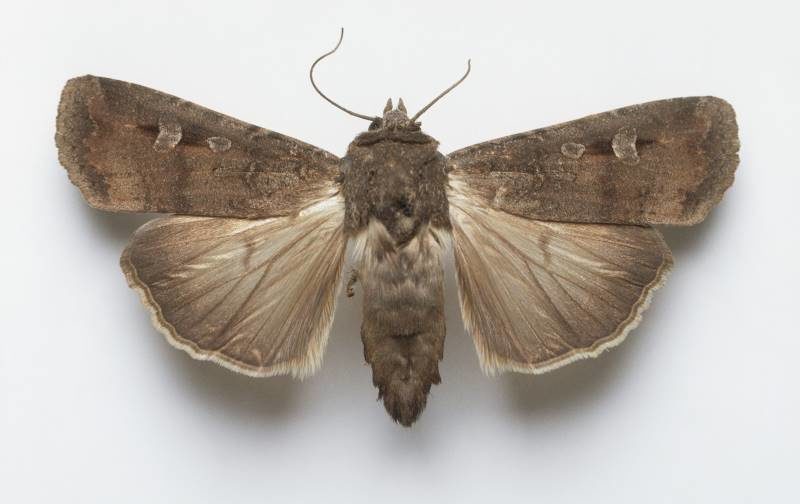Monarch butterflies and bogong moths are the only insects known to undertake migratory journeys to specific sites year after year.
An Australian species, bogong moths (Agrotis infusa) flee the harsh conditions of the arid plains by migrating long distances to spend summer in cool caves of the continent's alpine region. The butterflies (Danaus plexippus) use an internal sun compass for their journey, but the bogongs moths can't do that because they fly at night.
How millions of the adult moths find their way across 1000 kilometres or more of country in darkness, then back again at the end of summer, was unknown - until now. New research published in the journal Current Biology reveals that, like migratory birds, they use the Earth's magnetic field and visual landmarks to navigate this journey.
"When we began this study, we were convinced that the bogong moth would exclusively use celestial cues in the sky, such as the stars and the moon, for navigation during migration," says study co-author Eric Warrant of the University of Lund in Sweden.
"This, it turned out, was not the case. We were very surprised when we discovered that these moths could sense the earth's magnetic field just like night-migratory birds - and probably for the same reason."
Warrant and a team of researchers studied the migratory behaviour in the same way birds are studied, with special flight simulators that can create particular magnetic fields, and also visual cues such as landmarks. The moths, which are a large and bulky species, were tethered within the flight simulators and presented with a variety of stimuli.
The team discovered that when a natural Earth-strength magnetic field and visual landmarks were presented together, the moths flew in a predictable flight direction. When the two were presented in conflict, they became disorientated after a few minutes.
The findings led the researchers to conclude that bogong moths rely on a magnetic sense as well as sight. The researchers suspect that the magnetic sense is used to determine the general direction of flight, and then calibrated periodically with a visual feature such as the moon, particular stars or a mountain.
"This is essentially the same strategy we use when hiking in wilderness terrain: we determine our direction with a compass and then look for some distant landmark in roughly the same direction - for instance, a mountaintop or a distant tree - and then head for this as we walk," colleague David Dreyer says. "When this landmark is no longer reliable, we again check our direction with the compass and choose a new landmark to orient towards."
The ability of birds to sense the Earth's magnetic field has long been established. Recent research suggests that the detection of magnetic fields is associated with sensory receptor molecules known as cryptochromes in the retina of a bird's eye. This work is straying into new fields of quantum biology, but so far, no specific mechanism has been found.
Warrant and his team have presented the first instance of an insect using magnetic sense to steer flight, and are most curious as to how the moths actually do this.
"The discovery of the magnetic sensor is one of the Holy Grails of sensory physiology," he adds.
Reference:
The Earth's Magnetic Field and Visual Landmarks Steer Migratory Flight Behavior in the Nocturnal Australian Bogong Moth, Current Biology DOI: https://doi.org/10.1016/j.cub.2018.05.030
Tanya Loos is an ecologist and science writer based in regional Victoria, Australia.




Comment: Further reading: